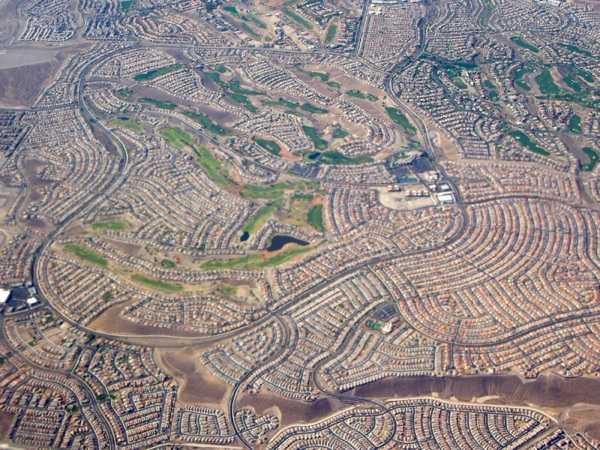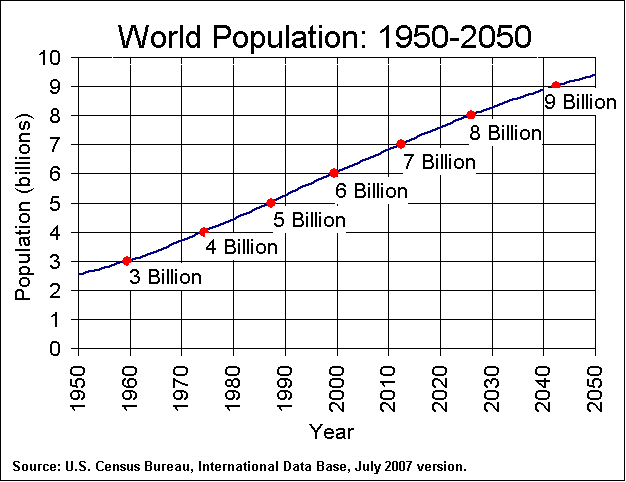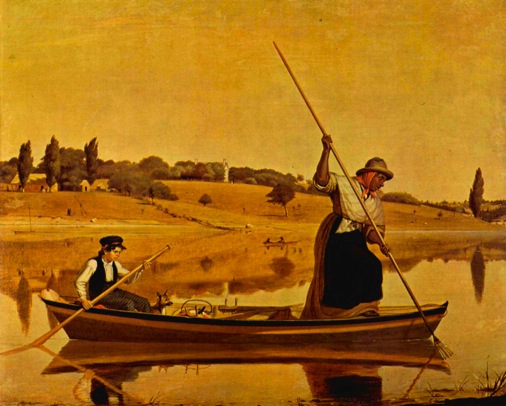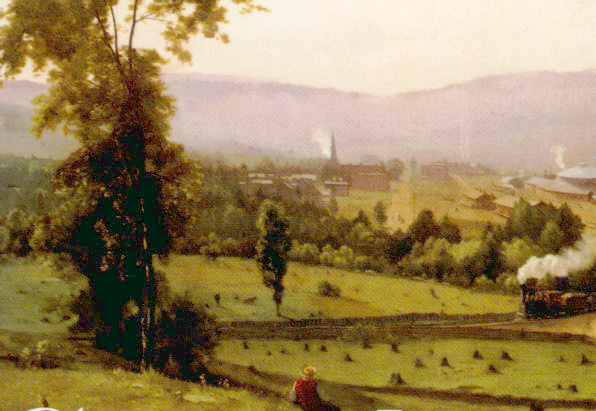analysis

Tragedy
by
1968

The uses of and then the subsequent contamination of the commons is one of the origins of our Contemporary Crisis
John Constable, Hampstead Heath, oil on canvass, 1836
Overview | Summary | Diagram | Key ideas | Conclusion | Influence
Interpretation: A synopsis of 11 major points of the essay
the origins of unsustainable economies
causes of uneven distribution of risks
irresistible patterns of institutional unresponsiveness
Interpretation:
Mingling of several crises
of technology and culture clash in contemporary environmentsor powerful institutions that have become outmoded
or religious "other worldliness" has failed to undertake stewardship
or we are too poorly educated to comprehend the natureís complexity
![]()
Nature as an adversary is narrowly self-defeating stance to take toward the planet.
Rachel Carsonís reminder? "Nature has no need of us."
Hardinís, Tragedy of the Commons.
Each participant pursuing his or her own best interest brings ruins to a commons, or any of a class of common property resources.
Overview | Summary | Diagram | Key ideas | Conclusion
Overview
"the park belongs to us all" --
"some problems have no technical solutions."
G. H., (1915-2003)
Populations use resources with technology living in some density / square mile.
 |
|
 |
|
under populated |
|
overpopulated |
| 5 / sq. mile |
|
50,000 / sq. mile |
"The population problem can not be solved in a technical way."
¶ 5
Freedom in a commons brings ruin to all.
Melissa Walkerís Reading the Environment.
Roots of the Crisis: Hardin, "Tragedy of the Commons," 502
Freedom to breed is intolerable in a commons over the long term.
"are we not trying to browbeat a free man in a commons into acting against his own interest?" (¶ 52)
"mutual coercion, mutually agreed upon by a majority of the people affected." (¶ 56 & ¶ 66 key one!)
Tragedy is an inherent human quality arising from hubris; the capacity for empathy with human tragedy is a sign of our moral imagination -- member of a class of no technical solution problems.
Key ideas:
Weisner & York in 1964 proposed the idea with respect to nuclear weapons of a "dilemma" that " has no technical solution." ¶1
"A technical solution may be defined as one that requires a change only in the techniques of the natural sciences, demanding little or nothing in the way of change in human values or morality." ¶2
"no technical solution problems," ¶3
"Every way in which I win, involves, in some sense, the abandonment of the game, as we intuitively understand it." ¶ 4
"My thesis is that the Ďpopulation problemí as conventionally conceived, is a member of this class....[no technical solution problems," ¶3 ] ¶5
"The population problem cannot be solved in a technical way..." ¶5
"Is ours a finite world?" ¶6
Hardinís Tragedy of the Commons: ten parts
1, 2, 3, 4, 5, 6, 7, 8, 9, 10, 11.
1st of 10 points to the argument:
What shall we maximize? ¶s. 6-18
"maximizing population does not maximize goods. Bentham's goal is unobtainable." ¶10
"We want the maximum good per person but what is good?" ¶ 13
"Incommensurables can
not be compared."
2d of ten points is
the "tragedy of freedom in a commons"
William Forster Lloyd (1794-1852) rebuttal to the hidden hand in population
"The essence of a dramatic tragedy is not unhappiness.... This inevitableness of destiny.... the futility of escape can be made evident in the drama"
¶ 19
3rd of ten points:
"Pollution"
"In a reverse way, the tragedy of the commons reappears in problems of pollution."
"The air and waters surrounding us cannot be readily fenced."
¶ 31
/ This is a KEYSTONE ¶ (paragraph) \
 4th:
4th:
"How to legislate temperance?"
Quis custodiet ipsos custodes? means
"Who shall watch the watchers themselves?" ¶ 35
5th:
Freedom to Breed Is Intolerable.

6th:
Conscience is self-eliminating -- it is negated by natural selection.
an appeal to conscience by having fewer children is futile
"To make such an appeal is to set ups a selective system that works toward the elimination of conscience from the race." ¶ 45
7th:
Pathogenic effects of conscience–short-term problems with ethics
"Everyman then is caught in what Bateson has called a "double bind," important causative factor in mental depression or schizophrenia
8th:
Mutual Coercion mutually agreed upon
"Taxing is a good coercive device." ¶ 55
9th:
The recognition of Necessity
"Every new enclosure of the commons involves the infringement of somebodyís personal liberty."

"Freedom is the recognition of necessity."
10th,
or last of the ten points:
 "The most important
aspect of necessity that we must now recognize is the necessity of abandoning
the commons in breeding." ¶ 66
"The most important
aspect of necessity that we must now recognize is the necessity of abandoning
the commons in breeding." ¶ 66
"The only way we can preserve and nurture other and more precious freedoms is by relinquishing the freedom to breed, and that very soon."
"It is the role of
education to reveal to all the necessity of abandoning the freedom to
breed."
![]()

Conclusion:
The commons is any where that a place or thing that belongs to everyone is the responsibility of no one. A commons may be tangible like the water flowing past us in a brook, or a trail along a forested path. But the concept is also less tangible as it may include underground water flowing across a property boundary, or the air blowing in from the sea, or the amount of rainfall needed to grow food, forests or provide the pasture on which grazing animals feed.
These are all examples of commons because all people have a reasonable expectation of using the resources of a commons in such a way as to take what they need even if what they obtain will destroy the carrying capacity or the assimilative capacity of the common's productive potential.
 In this sense the abstract idea of the flow of money through the economy which is called the rate of money supply is a commons. That is because as the supply of cash is adjusted the faster it moves the more frequent people may have access to money. If the rate of money increases is slower than the population demanding the money then shortages occur. In this financial context insurance pool of all those people who pay premiums to pay for damages must be larger the existing level and future level of damages, otherwise the pool of money shrinks.
In this sense the abstract idea of the flow of money through the economy which is called the rate of money supply is a commons. That is because as the supply of cash is adjusted the faster it moves the more frequent people may have access to money. If the rate of money increases is slower than the population demanding the money then shortages occur. In this financial context insurance pool of all those people who pay premiums to pay for damages must be larger the existing level and future level of damages, otherwise the pool of money shrinks.
The demand for any resource is a less- than-obvious commons as the number of people who can enter or leave a building or place where the building exists for purpose of traffic control and fire safety is limited for the public good and human well-being.
The examples of a commons need not be a completely public place that is a shared resource used by all but owned by no one. Non-tangible services can be considered a commons –though less obvious–because everyone needs the services of money, or insurance, or hospital care, and oxygen in an aircraft.
These shared characteristics of the services or common property resources, partially due to open access and partially due to elements of the service that no one can possess are why they can be called a commons.
Overview | Summary | Diagram | Key ideas | Conclusion
§§§
What evidence do we have of a planet in peril due to common property?
What we don't seem to do well.
Describe how each of these exhibit features of a commons:
- Greenhouse gases and atmospheric warming.
- Ozone hole depletion at the poles & increased UV radiation.
- Acid Rain from traffic & power plant emissions.
- Forests as watershed sources of aquifers and springs.
- Fire ecology and biological diversity as management tools.
- Fisheries as an aquatic problem of pasture and assimilative capacity.
Hardin | commons | Tragedy of the Commons | Ecological terms | Ecosystem Services | natural accounting | Ehrlich
Use Ehrlich and Ehrlich, The Dominant Animal , or Millerís Environmental Science, or Wilsonís Future of Life, and your library research to gather "scientific" evidence, as well as the other articles by Joseph Siry and in Melissa Walkerís Reading the Environment.





